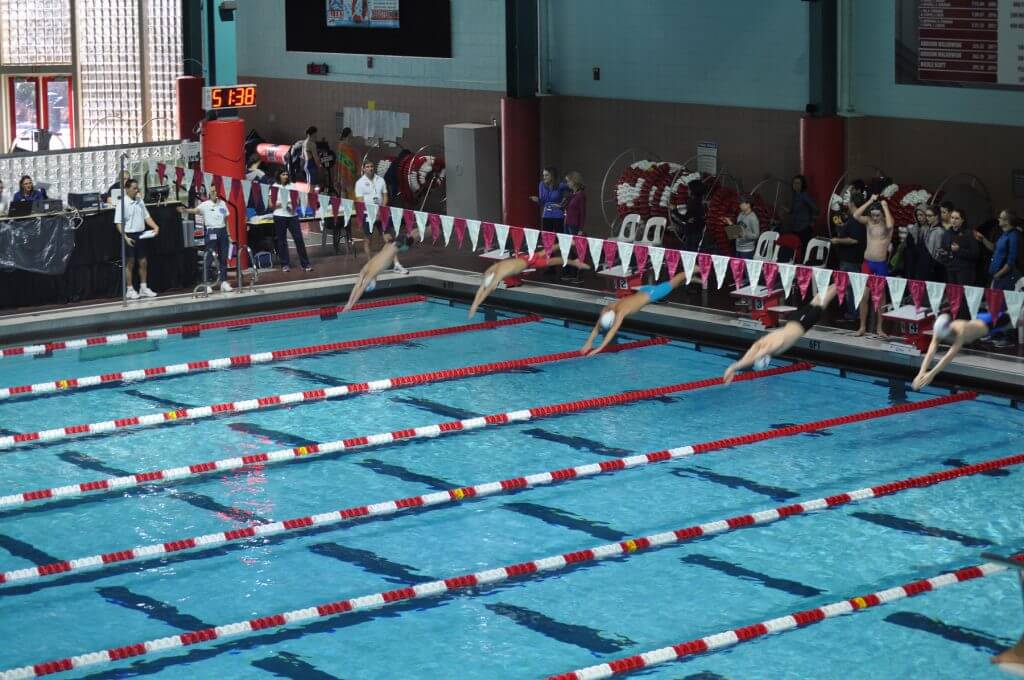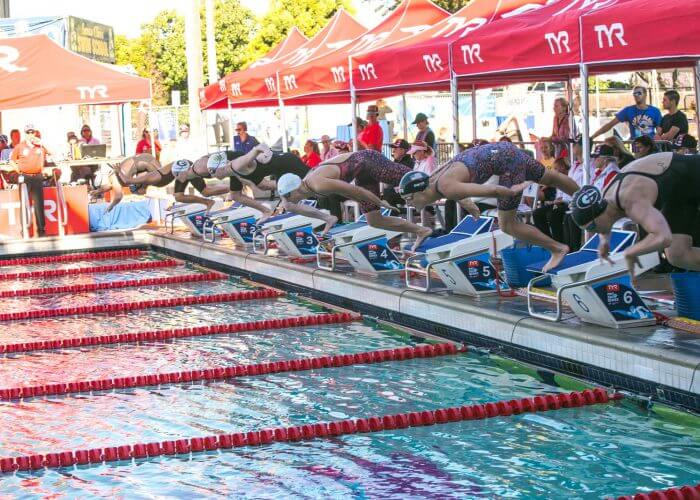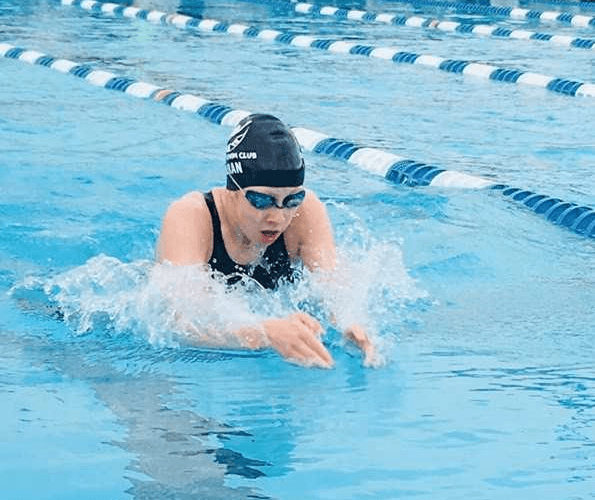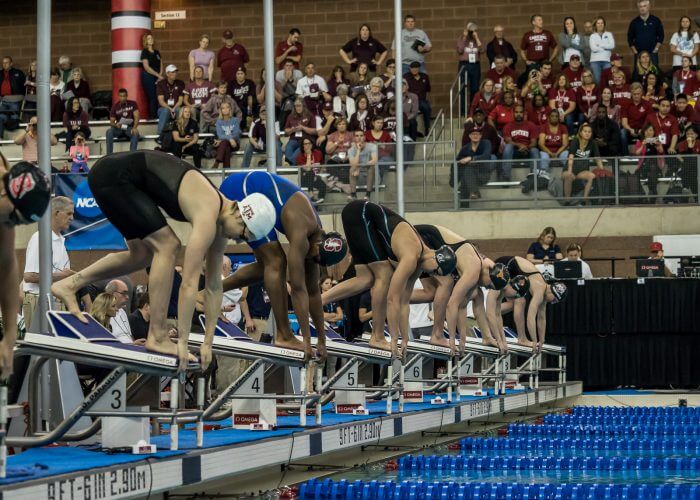4 Reasons Why In-Season Invitationals are Beneficial

By Ryan Gibbons
The course of a swim season is remarkably familiar: a few weeks of drills is followed by a long period of intense training, culminating in a few weeks of taper and a championship meet. Yet many swimmers overlook a major aspect of this season: large, in-season invitationals.
Many swimmers dread the idea of a long, possibly prelims-finals meet while broken down from months of intense training – after all, there’s little appeal to racing one’s primary events in a high-pressure situation without the benefits of shaving or tapering. However, these meets provide a plethora of benefits and opportunities to those who accept them in their fullest. Here are four reasons why these large training-season meets should be embraced and not swept aside.
1. Racing Opportunities

Photo Courtesy: JD Lasica
This one may seem obvious, but large in-season meets are great opportunities to race in a competitive situation. While competitors may be sore and tired, these meets provide swimmers with chances to perform at their highest capacities.
With long gaps in between championship meets, swimmers can gradually lose the mental and physical instincts of a race, forgetting how to execute fundamentals at their top speeds. By participating in high-level meets between championships, swimmers can fine-tune their racing skills.
2. Experimenting with Stroke and Strategy

Photo Courtesy: Bailey Duran
Virtually every swimmer alters some aspect of their technique or race plan throughout the course of a season; however, trying a new strategy at a championship meet is risky. An unsuccessful change could waste a tapered swim.
At in-season invitationals, swimmers can try out new stroke tricks or race plans in a competitive atmosphere without the fear of performing poorly at an elite meet. This gives both swimmers and coaches the opportunity to identify successful techniques and changes to make for championship meets.
These meets also provide coaches with a chance to identify ideal relay compositions and orders. Many large invitationals offer relay events, which allow for teams to test different swimmers and orders for ideal relays. It also allows for each team to practice their starts and strategies.
3. A Chance to Swim at Finals

Photo Courtesy: Peter H. Bick
While many smaller in-season meets are only timed-finals, most swimmers will have at least one prelims-finals invitational throughout the course of their training season. For swimmers who routinely make finals at championship meets, these meets offer the chance to swim twice without the pressure of a taper meet.
For many swimmers who rarely or never qualify for finals during championship seasons, these meets provide an opportunity to learn how to swim again in the evening while maintaining both speed and control. These invitationals can prepare these swimmers for how to race twice in one day without the added pressure of a championship meet.
4. The Possibility of Dropping Time
While it isn’t guaranteed or even expected, many swimmers can approach or break personal bests during invitationals. The competitive atmosphere of large invites, especially at finals, can push swimmers through their training exhaustion and produce high-quality results. Swimming best times in season can build great confidence for both swimmers and coaches and can build momentum for the championship season.
Coaches can use these performances to gauge the progression of their swimmers’ season. Exceptionally fast swims may indicate a positive response to new training techniques, while weaker performances could result from either exhaustion or faulty strategies. Thus, an invitational full of best times can be very exciting to swimmers and coaches alike.
Spending a valuable weekend at a pool instead of recovering can be both physically and mentally daunting, especially during the toughest weeks of training. But these invites can be incredibly beneficial to competitive swimmers, providing a wide range of opportunities that will likely result in substantially stronger championship meets. The excitement at the end of the season will be far greater than the frustration of training-time competition.
All commentaries are the opinion of the author and do not necessarily reflect the views of Swimming World Magazine nor its staff.



